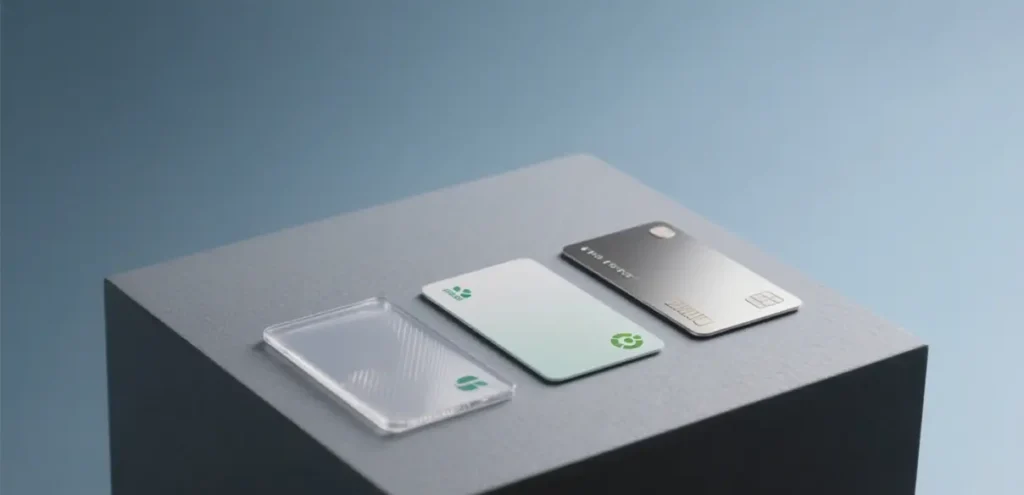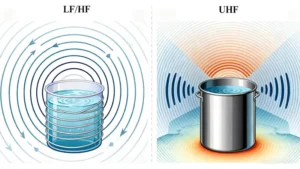
Unlock the Best RFID Card Material for 2025
Custom Your RFID Cards
Choosing the material for your RFID cards is more than just a financial decision – it’s a strategic choice that defines your brand identity and enhances user interaction. This guide simplifies the process, offering a clear comparison of PVC, eco-friendly, and metal RFID cards to help you confidently pick the best material for your needs.
Three Steps to Identify Your Ideal Material
Picking the right RFID card material might look tricky, but it’s simple with these three steps. Here’s the breakdown:
Step One: Identify Your Primary Driver
- Budget and Cost Control: For large-scale distribution on a tight budget, PVC and eco-friendly options like rPVC are cost-effective and reliable.
- Brand Image enhancement: If the card serves as an extension of your premium brand identity, jump straight to exploring metal cards and wood cards.
- Sustainability first: Prioritize eco-friendly series like PETG, PLA, and wood for sustainable, green initiatives without sacrificing performance. If your commitment to sustainability is the top priority, then the eco-friendly series—including PETG, PLA, and wooden cards—is your best choice.

Step Two: Consider the Usage Period
The lifespan of your card determines the durability requirements. Here’s how to choose:
- Long-Term Use For applications like annual membership cards or employee IDs, prioritize durable materials such as PVC cards, PETG cards, or metal cards. These options withstand frequent use and maintain performance over time.
- Short-Term Use For one-off event tickets, transit passes, or temporary badges, opt for cost-effective eco-friendly materials like rPVC or PLA. These provide affordability and sustainability for short-term needs.
Step 3: Find the Intersection
Match your main goal with the card’s lifespan to find the perfect material. For instance, if brand image is key and you need long-lasting cards, metal or wood is your best choice. These materials offer both a high-end look and the durability for long-term use.
By following these three steps, you can pick the RFID card material that fits your budget, brand image, and project needs perfectly. Ready to choose the right material? Let’s explore each material in depth to help you decide!
Quick Overview of Material features
The following comparison table provides a quick overview of the core characteristics of various RFID card materials to help you make an informed decision:
| Material | Cost | Durability | Eco-Friendliness | Aesthetic Appeal | Typical Applications | Market Share |
|---|---|---|---|---|---|---|
| PVC | Low | Moderate | Low | Smooth | Membership Cards, ID Cards | 60% |
| Wooden | Medium | Moderate | High | Natural Texture | Gift Cards | 5% |
| PETG | Medium | High | Moderate | Transparent & Smooth | Credit Cards | 10% |
| rPVC | Low | Moderate | High | Smooth | Eco-Friendly Membership Cards | 15% |
| PLA | Medium | Low | High | Soft & Matte | Disposable Event Tickets | 5% |
| Metal | High | High | Moderate | Premium Metallic | VIP Cards, Business Cards | 5% |
In-Depth Analysis of Mainstream RFID Card Materials
Classic Choice: PVC Cards
PVC RFID cards are a popular choice for businesses looking for cost-effectiveness and versatility. They’re known for low costs and easy production, making them the standard for RFID cards. PVC cards provide a smooth finish, solid performance, and work with many chip types, suitable for daily use. They last about 2-3 years, offering a good balance of cost and functionality.
Common Uses: Chain retailers, schools, and corporate offices often use PVC cards for membership programs, student IDs, and employee access. Their affordability makes them great for large-scale use where budget matters.
Learn More: Dive deeper into our comprehensive guide to PVC Cards VS PETG Cards.
Green Innovation: Eco-Friendly Card Series
Businesses focusing on sustainability are increasingly choosing eco-friendly RFID cards, which include wooden, PETG, rPVC, and PLA options:
- Wooden Cards: With a natural feel, these are great for high-end gifts. They’re biodegradable but mid-cost due to complex production.
- PETG: Durable for up to 5 years and with a clear, glossy look, PETG is popular for credit and premium memberships. It’s recyclable and moderately eco-friendly.
- rPVC: From recycled PVC, rPVC is cost-effective and highly sustainable. It’s good for eco-conscious memberships and matches PVC’s performance with less environmental impact.
- PLA: Made from renewable corn starch, PLA is fully biodegradable, ideal for short-term uses like event tickets, but only lasts about a year.
Common Uses: These cards excel where sustainability matters, like organic stores, eco brands, and tech firms promoting green efforts. They attract customers who care about the environment.
Learn More: Explore the Complete Guide to Eco-Friendly Cards.
Premium Symbol: Metal Cards
Metal cards are renowned for their premium feel and exceptional durability, making them a popular choice for VIP membership cards and luxury business cards. Beyond their striking appearance, metal cards also incorporate evolving anti-counterfeiting technologies, adding both security and prestige to their function.
Common Uses: Metal cards are synonymous with exclusivity, often used in high-end clubs, VIP programs, and luxury brand business cards. They make a lasting impression in upscale environments.
Learn More: Discover the Ultimate Guide to Metal Business Cards.
Conclusion & Decision Checklist
Selecting the right material for your RFID cards is more than a technical choice—it’s a strategic move that influences brand perception, sustainability commitments, and user experience. Whether you’re considering versatile PVC, eco-friendly recycled or bio-based options, or premium metal cards, each adds unique value to your business goals.
Final Decision Checklist:
- Prioritize what matters to your brand: cost, eco-friendliness, or luxury?
- Determine the card’s lifespan: single-use, short-term, or long-term?
- Consider additional features: NFC, UHF compatibility, special finishes?
- Assess each option’s environmental impact.
- Ensure the material aligns with your brand image and sustainability goals.
Already clear about your direction? Contact our experts today to request free and get a detailed quote!


